SNEC Breaking News: DAS Unveils Full Series of Technical Routes That Will See Solar Cell Efficiency Exceed 35%
2023-05-30
On May 26, the International Photovoltaic Power Generation and Smart Energy Conference & Exhibition ( hereinafter reffered to as SNEC), came to an end with around 500,000 people in attendance. As a top-tier brand in N-type, DAS Solar unveiled a full series of high-efficiency cell technical routes, and five revolutionary cell technical routes, promising more than 35% efficiency increase in the research and development of solar cells. DAS Solar not only maps out the technology path to further improve the efficiency of the current N-type cell, but also makes a forward-looking advance layout of cell technology for the "post-silicon era", thus drawing up a plan for its future technology development that is advanced, clear, complete and executable.
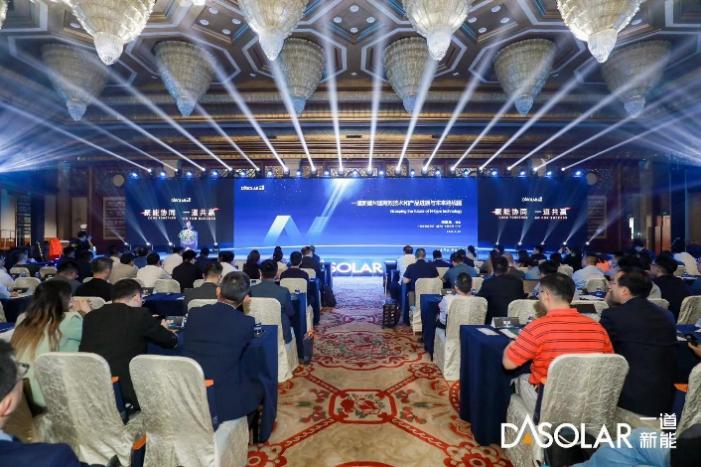
DAS Solar New Product Launch Presentation
Dr. Song Dengyuan, the Chief Technology Officer of DAS Solar, said according to the photovoltaic market LCOE optimal principle, DAS Solar’s N-type TOPCon3.0 Plus technology and products have been rolled out, which meet market demand, have highest cost performance and adopt iterative PERC technology. Based on advanced research and market trend assessment, it has laid out five revolutionary technical routes in parallel, namely TOPCon4.0, TBC, SCPC, TSiX, and SFOS, with cell efficiency exceeding 35%.
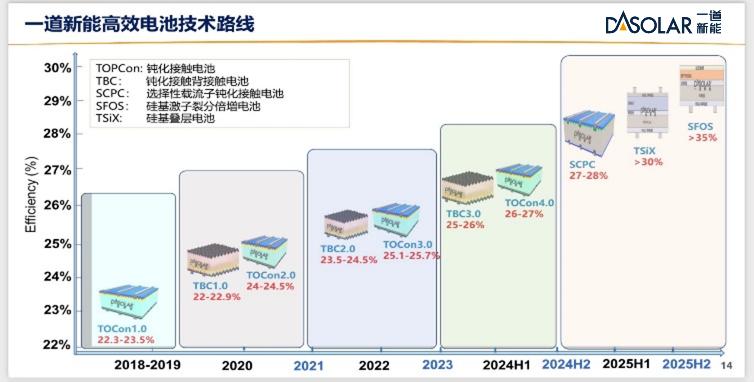
DAS Solar’s Technology Development Roadmap
TOPCon & TBC: Seize iterative opportunities from mainstream technology to market segments
Since its establishment, DAS Solar has, driven by its accurate prediction of the trend of technology development, focused on the N-TOPCon technology. The TOPCon 1.0 to 3.0 Plus technology has promoted the technological iteration of China’s PV industry from PERC to TOPCon, and become the mainstream technology. According to Infolink, TOPCon technology will account for about 80% of the N-type technology by 2026. DAS Solar has begun mass production of TOPCont 3.0 plus, which is based on three core technologies, namely i-SE, ut-PolySi and mt-Pass, with the highest efficiency hitting 25.8%, the laboratory efficiency exceeding 26.24%, and the open circuit voltage of 730mV a world record. The 430W-640W N-type 3.0 high-efficiency products cover applications from distributed, industrial rooftop to large-scale utility plants, supporting ecology photovoltaic, urban photovoltaic and offshore photovoltaic in 18 application scenarios. It is moving towards the era of TOPCon4.0 currently.
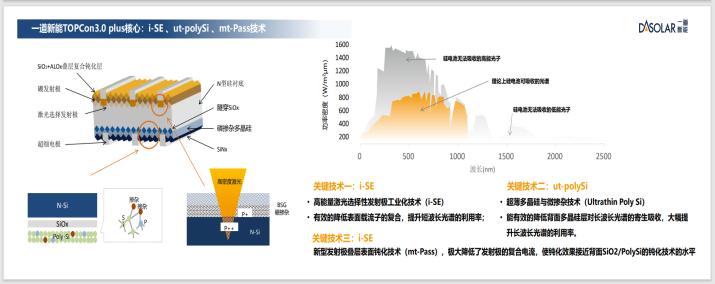
Three Core Technologies of TOPCon3.0 Cell
TBC technology is a BC high-efficiency cell technology developed by the company in parallel with the TOPCon technology, and is a new high-efficiency cell technology by combining the efficient TOPCon technology with the Topcon-BC technology. TBC uses TOPCon's excellent passivation contact structure, electrodes all prepared on the back of the cell, without any busbars on the front surface of the cell, resulting in avoidance of the blackout loss of about 3.5% of the conventional cell front busbars. DAS started its R&D on TBC1.0 high-efficiency cells in 2020. TBC3.0 has been successfully developed with an efficiency of more than 25.2%. TBC module products based on the new generation will be launched in the second half of 2023. TOPCon and TBC cell efficiency will be over 27%.
SCPC & TSiX: Towards ultra-high solar cell efficiency
SCPC cell, based on TOPCon cell structure with 26% efficiency, is made of novel highly selective carrier contact passivation materials. The recombination current of the cell drops to its limit, bringing the conversion efficiency of crystalline silicon cell close to its theoretical limit. Designed for greater cell efficiency, TSiX cell, a new type of silicon-based laminated cell, extends the use of the solar spectrum to the infrared light domain, and the laminated cell can greatly increase the open circuit voltage of the cell. DAS Solar is cooperating with many well-known universities and research institutes at home and abroad. Core technologies developed for TSiX cell include: low resistance tunneling layer technology in the middle layer of top and bottom cells; conformal deposition technique of top cell on crystalline silicon suede surface; spectrum allocation techniques for top and bottom cells and metallization technique. The industrialization efficiency of TSiX cell will reach more than 30%.
SFOS: Reformational high-efficiency cell technology for post-silicon era
How to further improve the efficiency of crystalline silicon cells beyond the theoretical limit of 29.4% for crystalline silicon solar cells has become a research hotspot, a potential breakthrough, and an urgent problem in the international photovoltaic community. Thus, DAS Solar, by leveraging the advantages of the CNAS photovoltaic research and development laboratory, has started cooperation with the Professor Martin Green’s team from the Center for Advanced Photovoltaics, University of New South Wales (UNSW), Australia, an international top photovoltaic research and development institution, to research and develop new ultra-efficient SFOS solar cells with an efficiency greater than 35%. With DAS Solar’s high-efficiency silicon cell as the platform cell, a novel photoelectric conversion film material with singlet fission property is superimposed on the surface of the cell to trigger the exciton multiplication generation process, making solar cells more than 100% quantum efficient, and the maximum efficiency of SFOS can theoretically exceed 40%. SFOS cell, featuring low cost and high efficiency, conforms to the first principle that photovoltaic power products should have high-cost performance.
Professor Martin Green's hope for ultra-efficient SFOS cell research and development
Martin Green, Scientia Professor at the University of New South Wales, Sydney, and Director of the Australia Center for Advanced Photovoltaics, congratulated DAS Solar on its achievements made in just over four years when addressing DAS Solar's " N-type 3.0 Launch Ceremony & Global Customer Event". The joint R&D of ultra-efficient SFOS cells between the Center and DAS Solar will promote the ultra-efficient cell technology. The cell structure, built on DAS Solar’s strong research strength on silicon cell, is blessed by the novel photoelectric conversion thin-film materials with singlet fission properties developed by the UNSW, forming the exciton multiplication process.
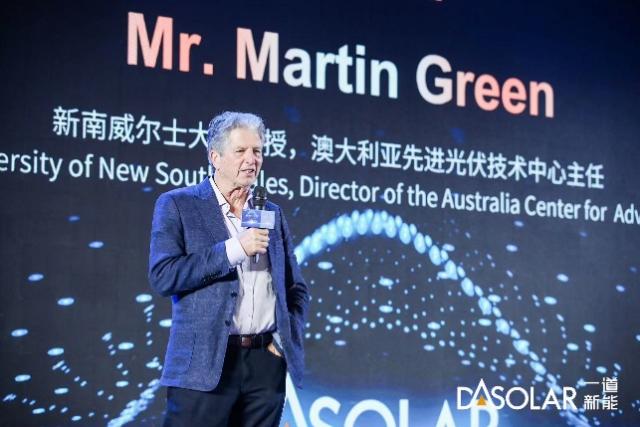
Professor Martin Green delivered a speech
Theoretically, the maximum efficiency of the ultra-efficient SFOS solar cells can exceed 40%, so it will promote a new generation of efficient cell technology transformation. Dr. Song Dengyuan and Professor Martin presented a prototype of the DAS Solar’s latest TOPCop3.0 plus high-efficiency cell. Dr. Song then presented it to the Professor Martin as a token of appreciation for his outstanding contributions to the development of photovoltaic technology and the cultivation of high-end talents in China and around the world.
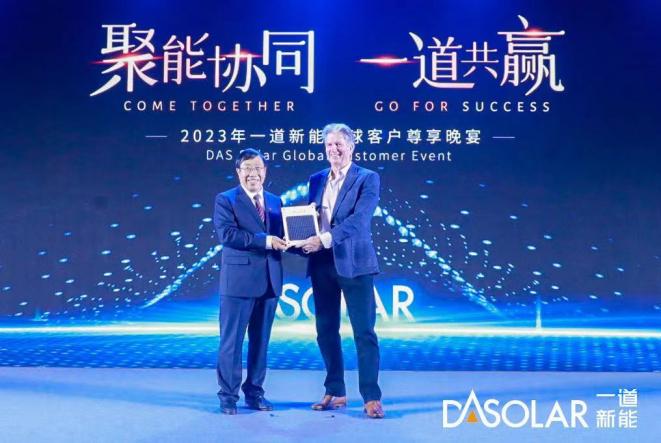
Professor Martin and Dr. Song demonstrated the TOPCon 3.0 high-efficiency cell

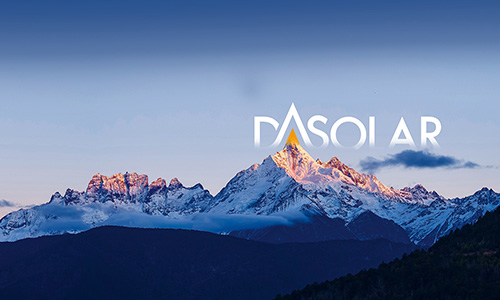





 浙公网安备33080302000236
浙公网安备33080302000236